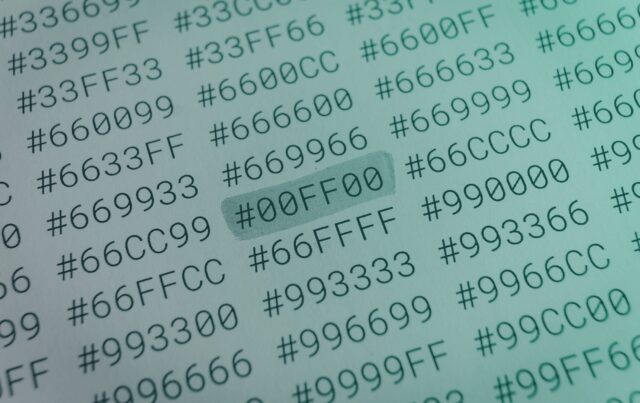Your password is the first line of defense against hackers — but how strong is it really? With our Password Security Calculator, you can quickly check the strength of any password and see how long it would take to crack using different types of computers, from a standard office PC to a gaming rig, a supercomputer, or even a quantum computer.
You can also experiment by adjusting the password length, character types (lowercase, uppercase, numbers, symbols), and instantly discover how each factor affects security. Use this tool to create safer, harder-to-crack passwords and protect your digital life.
Why password security matters
Passwords remain the most common method of digital authentication. From email accounts and online banking to work applications and social media, a strong password acts as the gateway to your personal and professional life. Weak or reused passwords can lead to devastating consequences, including identity theft, financial fraud, data breaches, and reputational damage.
According to industry reports, a significant percentage of cyberattacks still begin with compromised credentials. Hackers don’t always need to exploit complex vulnerabilities — often, they simply guess or steal weak passwords. This makes password security one of the most crucial aspects of modern cybersecurity.
The role of password length and complexity
When it comes to password strength, length is often more important than complexity. A short password, even with a mix of uppercase letters, numbers, and symbols, can still be cracked quickly with today’s computing power.
-
Short passwords (under 8 characters): Easily cracked in seconds or minutes by brute-force tools.
-
Medium-length passwords (8–12 characters): Stronger but still vulnerable to determined attackers.
-
Long passwords (12+ characters): Significantly more resistant, especially when random or passphrase-based.
Complexity adds another layer of defense. Mixing lowercase, uppercase, numbers, and symbols expands the character set that attackers must try, increasing the time required to crack the password. The ideal approach is combining length + complexity, for example, a 16-character passphrase with random words and symbols.
How hackers crack passwords
Understanding the techniques hackers use can help users defend themselves more effectively.
Brute force attacks
The attacker tries every possible combination of characters until the correct password is found. The longer and more complex the password, the more time and computational power this requires.
Dictionary attacks
Instead of random guesses, attackers use precompiled lists of common passwords, dictionary words, and leaked credentials. This method is faster than brute force and exploits the tendency of people to use predictable words.
Rainbow tables
A rainbow table is a database of precomputed password hashes. If a password database is leaked, attackers can compare the hashes to their table to recover the original passwords quickly. Salting passwords can make this attack less effective.
Phishing and social engineering
Not all attacks are technical. Hackers often trick users into revealing their passwords through fake emails, websites, or phone calls. These attacks bypass even the strongest passwords if the user is deceived.
Malware and keyloggers
Malicious software can record keystrokes, take screenshots, or steal saved credentials directly from devices. In such cases, password strength is irrelevant, highlighting the importance of antivirus software and secure practices.
Tips for creating strong passwords
-
Use at least 12–16 characters, preferably more.
-
Combine uppercase, lowercase, numbers, and symbols.
-
Avoid dictionary words, personal information, or common patterns (e.g., “123456” or “password”).
-
Create passphrases by stringing together random words and symbols (e.g., BlueHorse$River19!Cloud).
-
Never reuse passwords across multiple accounts.
-
Use a password manager to generate and store complex passwords securely.
Why password managers are essential
A password manager helps solve the problem of remembering multiple strong passwords. These tools generate long, complex passwords and store them securely in an encrypted vault. Users only need to remember one master password.
Password managers also protect against phishing by autofilling credentials only on legitimate websites. Popular password managers include LastPass, Bitwarden, 1Password, and KeePass.
Multi-factor authentication (MFA)
Even the strongest password can be compromised. That’s why enabling multi-factor authentication (MFA) is critical. MFA requires at least two of the following:
-
Something you know (password or PIN)
-
Something you have (smartphone, security token)
-
Something you are (biometric, such as fingerprint or face recognition)
This makes it much harder for attackers to access accounts, even if they steal a password.
The future of authentication: beyond passwords
Experts agree that the future of security involves moving beyond traditional passwords. Several emerging technologies are shaping this landscape.
Biometrics
Fingerprint scans, facial recognition, and iris scans are already common in smartphones and enterprise systems. Biometrics provide convenience and security but also raise privacy and spoofing concerns.
Passkeys and FIDO2
Passkeys are cryptographic credentials that replace passwords. They are resistant to phishing and reuse, offering a seamless login experience across devices. Tech giants like Apple, Google, and Microsoft are adopting this standard.
Hardware tokens
Devices like YubiKeys provide secure authentication by generating one-time codes or using cryptographic keys. These are extremely difficult for hackers to steal remotely.
Zero-trust security
Organizations are shifting toward zero-trust models, where no user or device is automatically trusted. Continuous authentication and context-aware access controls are replacing reliance on static passwords.
Quantum computing threats
While still emerging, quantum computers could one day break many traditional encryption methods. This would drastically reduce the time needed to crack passwords. Researchers are already working on post-quantum cryptography to defend against this future threat.
Real-world password breach statistics
Understanding the scale of password insecurity helps highlight the importance of strong credentials.
-
Studies show that the most common password worldwide is still “123456,” used by millions of accounts.
-
According to Verizon’s Data Breach Investigations Report, over 80% of hacking-related breaches involve weak or stolen passwords.
-
In large breaches like Yahoo, LinkedIn, and Adobe, millions of users had their plain-text or weakly encrypted passwords exposed. Many of these were short, simple, or reused across multiple services.
These statistics prove that password strength is not a theoretical issue — it’s one of the biggest cybersecurity problems in the world.
Common mistakes people make with passwords
Despite widespread advice, users still repeat the same mistakes:
-
Reusing passwords across multiple accounts — once one site is hacked, attackers try the same credentials everywhere.
-
Using personal information like birthdays, pet names, or favorite sports teams. These details are easily guessed or found through social media.
-
Choosing short passwords because they are easier to remember, ignoring how quickly they can be brute-forced.
-
Storing passwords insecurely, such as in plain text files, sticky notes, or unencrypted spreadsheets.
-
Sharing passwords with colleagues, friends, or family members.
Avoiding these mistakes is as important as creating a strong password in the first place.
Enterprise password security
For businesses, password security is not just a personal matter but a compliance and financial concern. A single compromised employee account can give hackers access to sensitive data, trade secrets, or entire corporate networks.
Enterprises must implement:
-
Strict password policies requiring length, complexity, and regular changes.
-
Multi-factor authentication across all critical systems.
-
Single sign-on (SSO) solutions to reduce password fatigue.
-
Continuous monitoring for credential stuffing and brute-force attacks.
-
Employee training to recognize phishing and social engineering attempts.
A strong enterprise password policy can prevent millions in damages from cyberattacks.
Legal and compliance aspects
Password security is also tied to regulatory requirements.
-
GDPR in Europe emphasizes protecting user data, including credentials.
-
HIPAA in the U.S. requires secure authentication for healthcare records.
-
PCI DSS enforces strong password rules for organizations handling credit card data.
Failing to comply with these standards can result in heavy fines, lawsuits, and reputational damage. Password security is therefore not optional — it is a legal necessity in many industries.
The psychology of password creation
Why do people still use weak passwords? Psychology offers some answers.
-
Cognitive load: Remembering dozens of unique, complex passwords is overwhelming.
-
Optimism bias: People underestimate their chances of being hacked, assuming attackers won’t target them.
-
Convenience over security: Short, memorable passwords feel easier to manage, even though they create more risk.
-
Habits: Once users get used to certain password patterns, they tend to repeat them across accounts.
Password managers and education help reduce these psychological barriers by making security both practical and accessible.
Education and awareness
Technology alone cannot solve the password problem — people must understand why it matters. Regular awareness training should cover:
-
The importance of unique passwords for every account.
-
How attackers exploit weak or reused passwords.
-
Safe password storage practices.
-
The benefits of using MFA and password managers.
Organizations that invest in cybersecurity awareness often see dramatic reductions in phishing success rates and password-related breaches.
The evolution toward passwordless security
While strong passwords remain essential today, the long-term trend is moving toward passwordless authentication. Tech leaders are developing methods that combine convenience with stronger cryptographic protections.
-
Passkeys: Already supported by Apple, Google, and Microsoft, replacing passwords with device-based cryptographic keys.
-
Decentralized identity systems: Using blockchain to verify users without centralized passwords.
-
Continuous authentication: Monitoring behavior, location, and device usage to ensure ongoing identity verification.
These approaches aim to solve the usability and security issues that have plagued passwords for decades.
Password entropy and the math behind strength
The strength of a password can be measured mathematically using the concept of entropy. Entropy, in this context, refers to the unpredictability of a password. The higher the entropy, the harder it is to guess.
-
A password made of only lowercase letters has 26 possible characters.
-
If you add uppercase letters, numbers, and symbols, the set expands to over 90 characters.
-
For each additional character, the number of possible combinations increases exponentially.
For example:
-
A 6-character lowercase-only password has 26⁶ = 308 million possibilities.
-
A 12-character password with uppercase, lowercase, numbers, and symbols can reach over 10²³ possibilities.
This is why adding both length and variety dramatically increases security.
Credential stuffing and dark web leaks
Hackers often don’t need to guess your password — they may already have it. Data breaches expose billions of credentials every year, which are sold or shared on the dark web.
Credential stuffing is when attackers take leaked usernames and passwords and try them on other services, exploiting the fact that many people reuse credentials across multiple accounts.
Regularly checking whether your passwords have been exposed (using tools like Have I Been Pwned) and enabling MFA are critical defenses against credential stuffing.
Password expiration policies: pros and cons
For years, organizations required users to change passwords every 30, 60, or 90 days. While this was intended to improve security, experts now question its effectiveness.
Pros:
-
Limits the damage if a password is compromised.
-
Forces users to refresh credentials regularly.
Cons:
-
Users often make only small changes (e.g., Password1 → Password2).
-
Leads to weaker, predictable patterns.
-
Encourages writing down or reusing passwords.
Today, many security frameworks recommend focusing on longer, unique passwords combined with MFA instead of frequent forced changes.
Cultural differences in password habits
Password habits vary around the world:
-
In some countries, users prefer short numeric PINs because of widespread mobile usage.
-
In Western regions, passwords often contain names or dictionary words, making them easier to guess.
-
In cultures with complex character sets (e.g., Chinese, Japanese), passwords may include ideograms, which can increase entropy but also create compatibility issues.
These cultural variations highlight why global services must consider diverse password policies.
The rise of single sign-on (SSO) and federated identity
To reduce password fatigue, many organizations adopt single sign-on (SSO) solutions, allowing users to log in once and access multiple applications. Examples include Google Workspace, Microsoft Azure AD, and Okta.
Federated identity systems use trusted providers to authenticate users across services. While convenient, these systems also create a “single point of failure” if the master account is compromised. That’s why strong MFA is essential when using SSO.
AI and machine learning in password cracking
Attackers are increasingly turning to AI and machine learning to improve password-cracking efficiency. Instead of blindly guessing, AI models can learn from patterns in leaked password databases and generate likely candidates much faster than traditional brute force.
For example, machine learning algorithms can predict that people often substitute letters with numbers (e.g., “P@ssw0rd”) or append years to their passwords (e.g., “Summer2024”). This makes predictable patterns especially vulnerable in the age of AI.
How quantum computing might reshape authentication
Quantum computing poses both risks and opportunities. On one hand, quantum algorithms could drastically reduce the time needed to crack encrypted passwords and break traditional hashing algorithms. On the other hand, quantum-resistant cryptography is already in development, aiming to withstand these new threats.
In a future where quantum computing becomes mainstream, static passwords alone may become obsolete. Instead, security will rely more heavily on biometrics, cryptographic tokens, and decentralized identity solutions.
Password security is not static — it evolves alongside technology. The mathematics of entropy shows why length and complexity are vital. Dark web leaks and credential stuffing reveal the dangers of reusing weak credentials. AI and quantum computing are rewriting the landscape of both password cracking and defense.
For individuals, the takeaway is clear:
-
Use long, unique passwords with high entropy.
-
Never reuse credentials across accounts.
-
Protect logins with MFA and password managers.
-
Stay informed about future authentication trends like passkeys and passwordless login.
For organizations, the challenge is even greater. They must balance usability with strict security controls, train employees, comply with regulations, and prepare for a passwordless future.
Until then, strong passwords — supported by tools like the Password Security Calculator — remain one of the most practical defenses in the ongoing battle against cybercrime.
Image(s) used in this article are either AI-generated or sourced from royalty-free platforms like Pixabay or Pexels.
Did you enjoy this article? Buy me a coffee!





